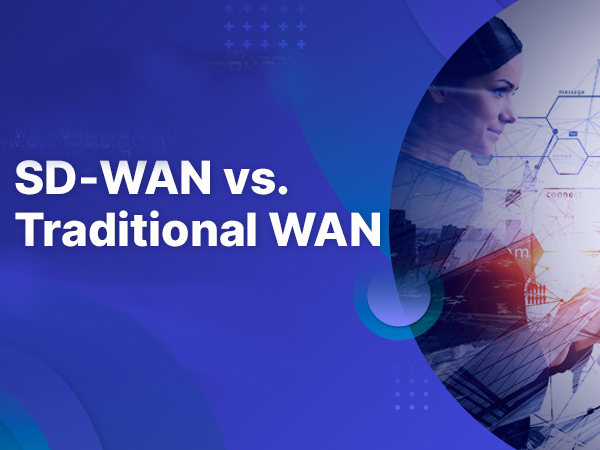SOC-as-a-Service (SOCaaS) is a security model wherein a third-party vendor operates and maintains a fully-managed SOC on a subscription basis via the cloud.
SOCaaS provides all of the security functions performed by a traditional, in-house SOC, including: network monitoring; log management; threat detection and intelligence; incident investigation and response; reporting; and risk and compliance. The vendor also assumes responsibility for all people, processes and technologies needed to enable those services and provide 24/7 support.
SOCaaS provides all of the security functions performed by a traditional, in-house SOC, including: network monitoring; log management; threat detection and intelligence; incident investigation and response; reporting; and risk and compliance. The vendor also assumes responsibility for all people, processes and technologies needed to enable those services and provide 24/7 support.
Where does SOCaaS fit within the security stack?
SOCaaS is an example of a managed service. While SOCaaS can be delivered by a third-party vendor as a stand-alone service, it is often part of a broader security package and should be integrated with other security tools and services within the organization’s security architecture.
Is SOCaaS the same as a Managed SIEM?
No. While security information and event management (SIEM) is a critical component within a SOC offering, it does not provide the same capabilities as a SOC. Namely, the SIEM itself does not monitor events as they happen throughout the enterprise in real time; rather, it is a tool that uses log data recorded by other software to determine that an event occurred.
Is SOCaaS the same as MDR?
There is some overlap in terms of capabilities between SOCaaS and managed detection and response (MDR). Both are cybersecurity services that combine technology and human expertise to perform threat hunting, monitoring, and response. However, SOCaaS, by definition, is an outsourced service, which is not always the case with MDR. SOCaaS also provides a greater range of services and offers stronger, more comprehensive protection as compared to an MDR tool.
SOC-as-a-Service Benefits
SOCaaS offers many important benefits to organizations as compared to a traditional on-premises SOC. These include:
Faster detection and remediation
One of the main benefits of SOCaaS is speed. By using a combination of advanced technology and automation, as well as human oversight, the SOC team can properly identify, categorize, prioritize and remediate security events. As the number of alerts continues to increase, it is critical for organizations to reduce the amount of time spent investigating “false positives” and focus on those issues that pose a real and urgent threat to the business.
Lower risk for a breach
Like a traditional SOC, SOCaaS operates continuously, providing 24/7 monitoring, detection and response capabilities. This helps ensure threats are contained and neutralized quickly, which in turn allows organizations to reduce their “breakout time” — the critical window between when an intruder compromises the first machine and when they can move laterally to other parts of the network.
SOCaaS also provides organizations with access to hyper-specialized security experts without having to hire or retain such people full-time. These individuals can be leveraged during specific security events to analyze activity and help formulate a remediation strategy. Such skillsets are limited within the market and it is often not practical nor possible for businesses to retain such talent in-house.
Finally, one of the most common causes of breaches are unpatched or outdated software or operating systems. As IT teams become increasingly short-staffed and overburdened, this is one area that can be easy to neglect, opening the door for would-be hackers and cybercriminals. SOCaaS ensures that someone is dedicated to these important activities and limits potential risk.
SOCaaS also provides organizations with access to hyper-specialized security experts without having to hire or retain such people full-time. These individuals can be leveraged during specific security events to analyze activity and help formulate a remediation strategy. Such skillsets are limited within the market and it is often not practical nor possible for businesses to retain such talent in-house.
Finally, one of the most common causes of breaches are unpatched or outdated software or operating systems. As IT teams become increasingly short-staffed and overburdened, this is one area that can be easy to neglect, opening the door for would-be hackers and cybercriminals. SOCaaS ensures that someone is dedicated to these important activities and limits potential risk.
Ability to scale
Like other XaaS solutions, SOCaaS is known for its flexibility and adaptability. Teams and services can easily be scaled up or down based on the organization’s needs or in response to specific events. By comparison, in a traditional SOC model, resources – and human resources, in particular – are finite and generally cannot be added quickly in times of need.
Enhanced maturity
In many ways, SOCaaS can be considered a “shortcut to maturity” in that companies that retain the services of a reputable vendor will benefit from the latest, most advanced solutions and highly-skilled staff. This helps fuel faster and more accurate detection and response while simultaneously lowering overall risk.
Lower cost than on-premise SOC
For most organizations, SOCaaS is more cost-effective than operating an on-premise SOC. This is because many costs, including those associated with staffing, equipment, licenses, hardware and software, are shared by multiple customers. This brings down the overall cost of operation for each subscriber.
Further, many SOCaaS pricing models are based on consumption, meaning that organizations only pay for the services they use.
Further, many SOCaaS pricing models are based on consumption, meaning that organizations only pay for the services they use.
Resource optimization
SOCaaS has become a particularly attractive solution in recent years due to a staffing shortage within the cyber industry. As attracting and retaining talent has become more difficult, SOCaaS not only helps solves the challenge related to workforce availability, but also frees up employees to focus on security use cases that are more suitable for in-house roles.
SOCaaS Roles & Responsibilities
SOCaaS roles include:
SOC Manager:
Acts as the security center leader, overseeing all aspects of the SOC, its workforce and operations
Security Analyst Tier 1 – Triage:
Categorizes and prioritizes alerts, escalates incidents to tier 2 analysts
Security Analyst Tier 2 – Incident Responder:
Investigates and remediates escalated incidents, identifies affected systems and scope of the attack, uses threat intelligence to uncover the adversary
Security Analyst Tier 3 – Threat Hunter:
Proactively searches for suspicious behavior and tests and assesses network security to detect advanced threats and identify areas of vulnerability or insufficiently protected assets
Security Architect:
Designs the security system and its processes, and integrates various technological and human components
Compliance Auditor:
Oversees the organization’s adherence to internal and external rules and regulations
SOC Coordinator:
Serves as the liaison between the SOCaaS vendor and the organization’s internal IT and security teams
SOC Manager:
Acts as the security center leader, overseeing all aspects of the SOC, its workforce and operations
Security Analyst Tier 1 – Triage:
Categorizes and prioritizes alerts, escalates incidents to tier 2 analysts
Security Analyst Tier 2 – Incident Responder:
Investigates and remediates escalated incidents, identifies affected systems and scope of the attack, uses threat intelligence to uncover the adversary
Security Analyst Tier 3 – Threat Hunter:
Proactively searches for suspicious behavior and tests and assesses network security to detect advanced threats and identify areas of vulnerability or insufficiently protected assets
Security Architect:
Designs the security system and its processes, and integrates various technological and human components
Compliance Auditor:
Oversees the organization’s adherence to internal and external rules and regulations
SOC Coordinator:
Serves as the liaison between the SOCaaS vendor and the organization’s internal IT and security teams
Types of organizations that could benefit from SOC-as-a-Service
Any organization that operates an on-premises SOC or is considering building one may be able to outsource the capability for added protection at a lower cost. This may be a wise decision depending on the maturity level of your organization and current security posture.
When it makes sense to leverage SOCaaS
As noted above, SOCaaS offers many important benefits to organizations as it relates to stronger protection, faster response, and lower costs. A subscription model may be the best option for your organization if you:
– Have limited IT and InfoSec staff, especially as it relates to highly-specialized cybersecurity skills or their ability to provide 24/7 coverage
– Do not have dedicated and secure physical space in which to operate a SOC
– Have not made any significant technology investments to provide the underlying capabilities of an on-prem SOC
– Have relatively low cybersecurity maturity and would like to provide a metaphorical shortcut by leveraging backbone services from a third-party
– Expect to have variable security needs within the business
– Have limited IT and InfoSec staff, especially as it relates to highly-specialized cybersecurity skills or their ability to provide 24/7 coverage
– Do not have dedicated and secure physical space in which to operate a SOC
– Have not made any significant technology investments to provide the underlying capabilities of an on-prem SOC
– Have relatively low cybersecurity maturity and would like to provide a metaphorical shortcut by leveraging backbone services from a third-party
– Expect to have variable security needs within the business
When it makes sense to maintain an in-house SOC
While SOCaaS typically provides the same services of a traditional SOC at a lower cost, some organizations may still choose to maintain an on-premises SOC. This may be the best option for organizations that:
– Have already made significant technology and human capital investments and have the resources to continue to maintain and evolve in this area
– Possess a high level of security maturity and strong security posture, combined with strong expertise that will allow the company to maintain and enhance its existing security architecture
– Require a high-degree of granularity within their security controls
– Face significant and complex regulations that are not fully understood or supported by a third-party provider
– Have already made significant technology and human capital investments and have the resources to continue to maintain and evolve in this area
– Possess a high level of security maturity and strong security posture, combined with strong expertise that will allow the company to maintain and enhance its existing security architecture
– Require a high-degree of granularity within their security controls
– Face significant and complex regulations that are not fully understood or supported by a third-party provider
SOC-as-a-Service Solutions
SOCaaS offerings are typically technology agnostic and will manage every part of a customer’s security stack, regardless of which tools the customer chooses or has deployed. When selecting a SOCaaS provider it is important to understand what tools the vendor can integrate and operate within their platform and what security components are included in the SOCaaS offer.




